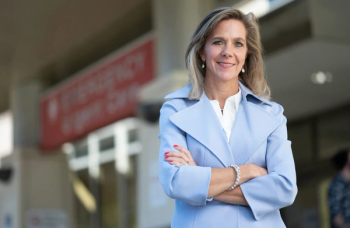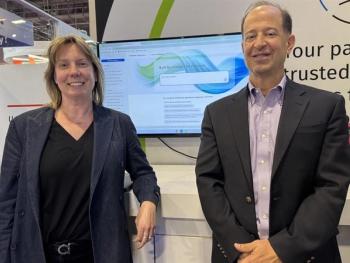
The Silicon Valley of Health Analytics Is Taking on Diabetic Retinopathy
How Oklahoma’s Center for Health Systems Innovation is changing rural healthcare.
When William Paiva, PhD, set out to make Oklahoma the “
An obvious reason was that Neal Patterson, MBA, a co-founder and former CEO of Cerner, had bequeathed a relational health database, comprising de-identified clinical information from 63 million patients over 18 years, to his alma mater, Oklahoma State University (OSU). The data came from hundreds of the electronic health record vendor’s clients, building the foundation for a robust healthcare research organization, OSU’s
But Oklahoma offers more than invaluable medical data, Paiva said last week at the Healthcare IT & Analytics Summit in Baltimore, Maryland. Its rural and Native American populations need stronger, more efficient medical care, and providers and patients there are open to high-tech innovations, Paiva said.
>>
“Rural healthcare is a great market for testing innovation,” he said. “Sometimes when you have an innovation and you try to bring it into an urban setting, you hit lots of headwinds—the incumbents, the status quo.” As such, Oklahoma could prove the perfect place to build the Silicon Valley of Health Analytics. “The need outweighs all the turf issues in the rural markets.”
So, what is OSU’s Center for Health Systems Innovation doing to spur change, in both healthcare technology and rural medicine? Quite a few things. Early projects included a policy study that found the number of emergency department encounters increased in the wake of the Affordable Care Act; an analysis of drug outcomes and mortality rates by race and sex; and looks into cardiology and septic shock.
But much of Paiva and his team’s work has focused on diabetes and the complications that often afflict rural communities. Those areas lack the specialists required to assist primary care physicians in handling the complications that are likely to occur in patients with diabetes, Paiva said. Rural patients, meanwhile, tend to be sicker, older, and underinsured, characteristics that are compounded by inadequate technology layers to support care delivery. Doctor shortages and distance further complicate the picture.
Diabetic retinopathy, which can cause blindness, has emerged as a major challenge in rural areas. Few diabetics from any background undergo annual eye exams, but rural residents find it especially troubling to take off work—many of these patients work hourly jobs—and incur transportation and healthcare costs, “all for something they don’t even believe they have,” Paiva said. All these factors force compliance rates for diabetic retinopathy below 10 percent despite the existence of a therapy that is 100 percent effective if used early, he added.
So, the Center for Health Systems Innovation compiled 1.5 billion data elements from 2 million patients and set about developing an algorithm-driven tool that can predict diabetic retinopathy. According to the institution’s analysis, the combination of the technology and physician expertise has driven the ability to predict diabetic retinopathy from little more than that of a coin flip to more than 90 percent.
Paiva’s team has tested the algorithm on several data sets and recently received a grant to validate the tool against existing gold standards. Soon, the center will blindly image 500 patients and then analyze them with the algorithm to gauge its performance, he said.
Many tech companies—including Google, one of the center’s partners—are building artificial intelligence (AI) tools that tackle diabetic retinopathy. Paiva acknowledged as much but said his organization has something that other start-ups lack. “You’re focusing on the wrong part of the problem,” he said of the other ventures. “The problem is that diabetics never get [the eye exam].”
OSU’s Center for Health Systems Innovation, on the other hand, is building a tool that could be placed in primary care physicians’ offices. It’s a technology that stands to become available where patients need it most.
The center is working on other ways to beat the effects of diabetes, with the goal of developing technologies that can help rural doctors battle all microvascular complications, Paiva said.
So far, those providers seem eager to access AI tools that promise better diagnoses and treatments. And perhaps the framing of the technology has contributed to their enthusiasm: Paiva considers the AI “augmented intelligence,” as it’s meant to aid, not replace, doctors on the ground, especially in far-flung areas that need all the medical help they can get.
Get the best insights in healthcare analytics
Related








































